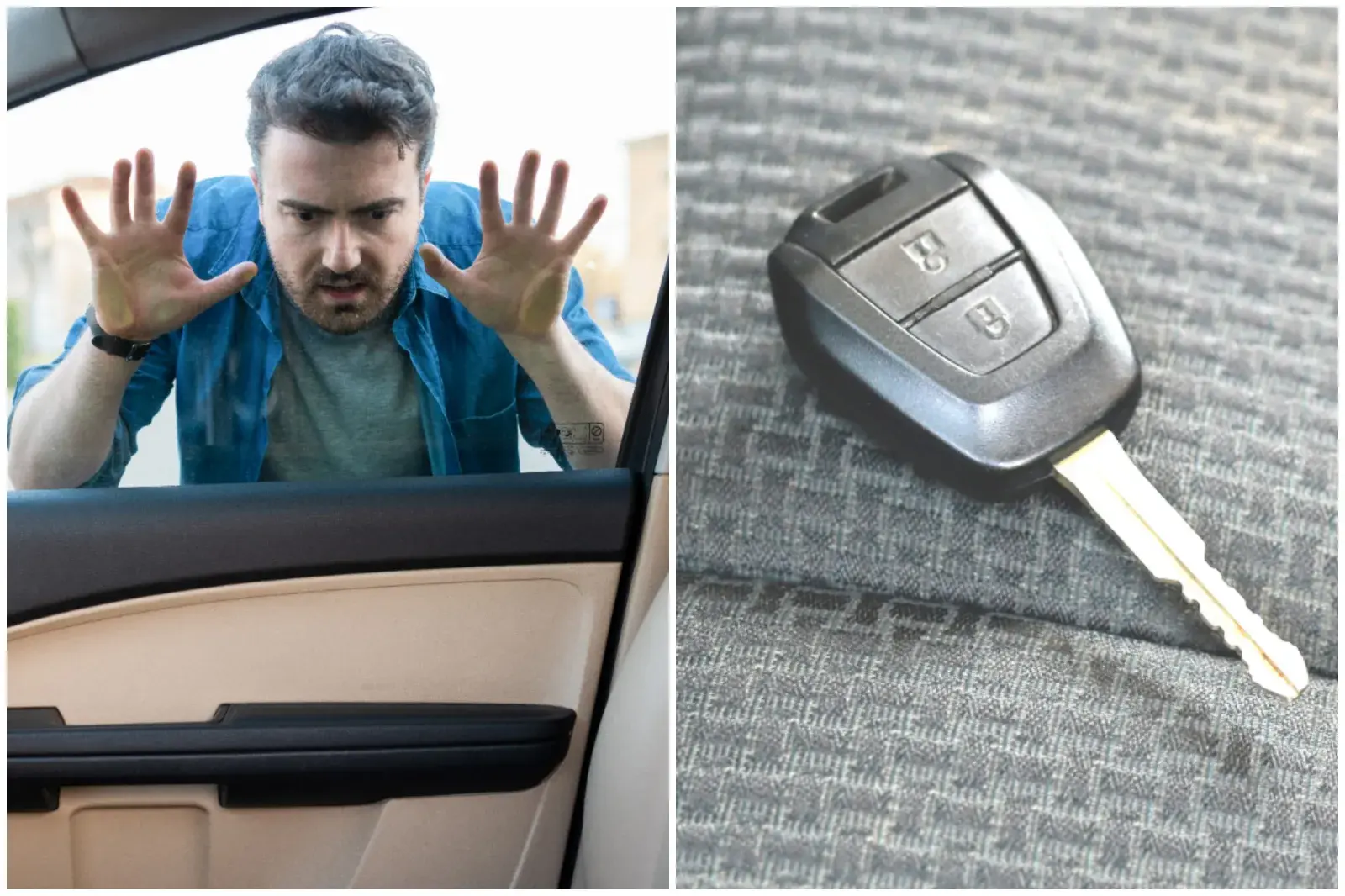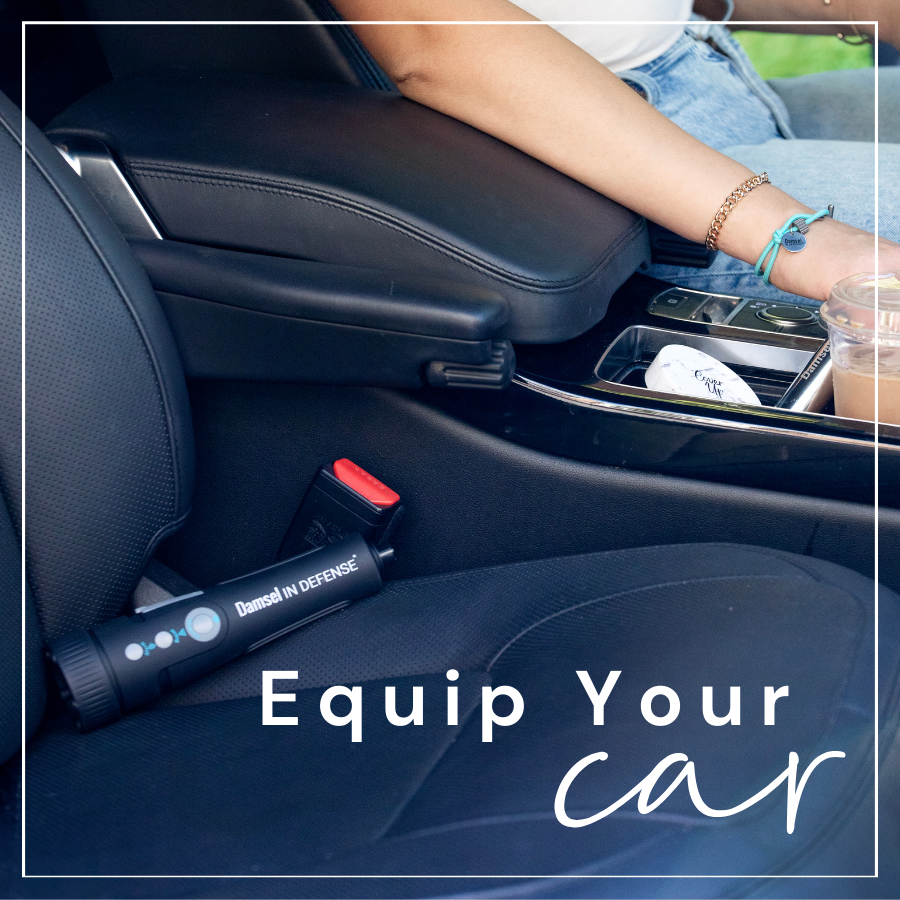Imagine you’re alone in your car, and suddenly you sense danger nearby. What’s in your hand that could help protect you right now?
Your car keys. You probably never thought of them as a self-defense tool, but knowing how to hold your keys the right way can give you an edge in a threatening situation. You’ll learn simple, effective techniques to use your keys for self-defense while inside your car.
These tips are easy to remember and could make a real difference when it matters most. Stay with me, and I’ll show you how to turn your everyday keys into a powerful safety tool.

Credit: www.newsweek.com
Key Grip Techniques
Knowing how to hold your keys for self defense in a car can increase your safety. Key grip techniques help you use keys as a quick tool against an attacker. Proper grips improve control and power. They also prevent injury to your own hand.
The Key Knife Hold
Hold your keys between your fingers like a small knife. Slide one or two keys out to form a sharp edge. Keep your fist tight and fingers curled around the keys. Aim to strike with the keys protruding from your knuckles. This grip helps you jab or slash effectively.
The Flail Swing Method
Grip the keyring firmly in your palm with keys hanging loose. Swing your arm to hit with the keys like a flail. This method creates momentum and adds force to your strike. Use wide, fast swings targeting sensitive areas like the face or arms. It is useful to create distance from an attacker.
Avoiding Finger Placement Mistakes
Do not place keys between fingers too loosely. They may slip or cause cuts on your own skin. Avoid holding keys too deep in your palm. This reduces control and impact power. Keep fingers curled tightly around the keys. A firm grip prevents accidental drops and injury.
Target Areas For Defense
Knowing where to strike is crucial for self-defense with keys in a car. Targeting sensitive body parts can stop an attacker quickly. Focus on areas that cause pain and disable movement. This increases your chance to escape safely.
Eyes And Throat Strikes
Eyes are vulnerable and sensitive to touch. Use your keys to jab toward the eyes. This causes pain and temporary blindness. The throat is another weak spot. A quick strike can disrupt breathing and shock the attacker. Aim carefully to avoid serious injury but create an opening to run.
Knees And Groin Attacks
Knees control movement and balance. A sharp hit with keys can cause the attacker to stumble or fall. The groin is extremely sensitive for most people. A strike here causes intense pain and immobilizes the attacker temporarily. Use this chance to break free and get help.
Using Keys To Stun
Hold your keys tightly between your fingers, with the tips sticking out. Use short, quick jabs to stun the attacker. Target soft areas like the temple, collarbone, or side of the neck. Even a small shock can give you the moment needed to escape. Practice this grip for confidence and speed.
Positioning In The Car
Knowing how to position yourself with keys inside a car can improve your safety. Your keys can act as a simple defense tool. Proper positioning helps you react quickly and confidently. Practice holding and using keys while in your vehicle to stay prepared.
Holding Keys While Unlocking Doors
Hold your keys firmly between your fingers. Keep the pointed ends sticking out for protection. Use your dominant hand to unlock the door. Keep your other hand free for balance or to check surroundings. Avoid holding too many keys to prevent slipping. Stay alert to nearby people and noises.
Ready Stance Inside The Vehicle
Keep your keys in your hand or lap after entering the car. Hold them so you can grip them tightly if needed. Sit upright with feet flat on the floor. Position your hands near your keys for quick access. This stance keeps you calm and ready. It also helps you stay aware of your environment.
Quick Access Strategies
Use a keychain with a loop to hold keys securely. Slide keys between fingers for a fast grip. Keep keys near the gear shift or on your lap. Practice pulling keys out smoothly without looking. If you carry a remote key fob, keep it in hand too. These strategies reduce reaction time during threats.
Enhancing Key Effectiveness
Keys can be simple tools for self-defense in a car. Holding them correctly improves their impact. Enhancing key effectiveness means making small changes that boost safety. These changes help you react faster and protect yourself better.
Using Keychains And Lanyards
Adding a sturdy keychain or lanyard makes keys easier to hold. It prevents keys from slipping out of your hand. A thick, strong keychain adds weight, making your strike more powerful. You can loop a lanyard around your wrist for extra security. This keeps keys ready and close during an emergency.
Adding Tactical Accessories
Tactical accessories add extra function to your keys. Items like keychain kubotans or small metal tools increase impact force. These tools fit on your keyring without extra bulk. They can target sensitive areas like hands or arms. Tactical accessories make your keys more than just metal pieces.
Combining Keys With Other Items
Keys work well with other everyday items. Holding keys along with a pen or flashlight gives you more options. You can switch quickly between items depending on the threat. Combining keys with a small, firm object increases your defense choices. This approach helps you adapt and stay safe in different situations.
Safety Tips And Precautions
Using your car keys for self-defense can provide a quick and accessible way to protect yourself. Knowing the right safety tips and precautions helps you stay safe without causing harm to yourself or crossing legal boundaries. These tips focus on careful handling, understanding the law, and knowing when to act physically.
Avoiding Self-injury
Hold your keys firmly but not too tightly. Avoid wrapping keys around your fingers, as this can cause cuts or bruises. Keep your wrist straight to prevent strain. Practice the grip at home to build confidence. Use only the tip of the key to poke or jab. Do not swing keys wildly, as you might miss and hurt yourself.
Legal Considerations
Self-defense laws vary by location. Know your local laws about using objects as weapons. Keys are usually seen as everyday items, but using them to hurt someone can lead to legal trouble. Use your keys only to defend yourself, not to attack or threaten. Calling the police after an incident is important to explain your actions.
When To Use Physical Defense
Physical defense should be the last option. Try to escape or call for help first. Use your keys only if you feel seriously threatened. Aim for sensitive areas like the eyes, throat, or hands. Strike quickly and then run away. Avoid prolonged fights to reduce injury risk.

Credit: www.amazon.com
Training And Practice
Training and practice are essential to use your keys effectively for self-defense in a car. Without regular drills, your reaction may be slow or clumsy in a real situation. Practicing helps you develop muscle memory and confidence to act quickly. Consistent practice makes the technique feel natural and reliable.
Drills For Key Defense
Start with simple drills to hold your keys firmly between your fingers. Practice striking motions aimed at vulnerable areas like the eyes or throat. Use a pillow or soft target to avoid injury. Repeat these motions daily until they become automatic. Focus on speed and control during each strike.
Simulated Scenarios
Set up practice scenarios to mimic real attacks near or inside your car. Have a partner act as an attacker, moving toward you unexpectedly. Practice drawing your keys quickly and defending yourself. These simulations build awareness and prepare your mind for sudden threats. They also help improve your timing and precision.
Building Confidence
Confidence comes from repeated practice and success in drills. The more you train, the less hesitation you will feel during an emergency. Visualize yourself defending calmly and effectively. Trust your ability to use your keys as a tool for protection. Confidence can deter attackers and improve your safety.

Credit: damselindefense.net
Frequently Asked Questions
How To Use Self-defense?
Use self-defense by targeting an attacker’s vulnerable spots like eyes, throat, or knees. Create distance using keys or objects. Shift weight or stomp if grabbed. Always prioritize escaping safely.
Can You Have A Gun For Self-defence In The Uk?
Gun ownership for self-defense is illegal in the UK. Firearms require strict licensing, mostly for sport or hunting. Self-defense must rely on non-lethal means.
How Should I Hold Keys For Self Defense In A Car?
Hold your keys in a “key knife” grip with the key protruding between your fingers. This position allows quick access and effective striking if needed, while keeping your hand ready to open the car door instantly.
Can Car Keys Be Effective For Self Defense?
Yes, car keys can serve as a practical self-defense tool when held correctly. They can help you strike vulnerable attacker points and create distance, especially when no other weapon is available.
Conclusion
Holding your keys correctly can add an extra layer of safety. Practice gripping them firmly and keep them within reach inside your car. Remember, keys are a simple tool to create distance and protect yourself. Stay alert and trust your instincts in risky situations.
Your awareness combined with proper key holding can make a real difference. Safety starts with small actions done right. Keep calm, stay prepared, and use your keys wisely.







